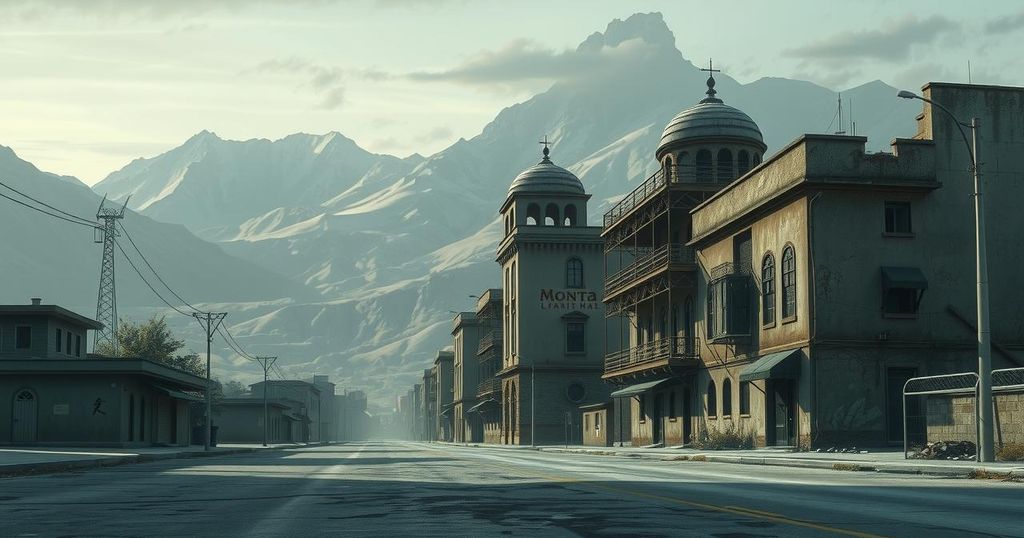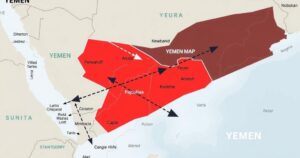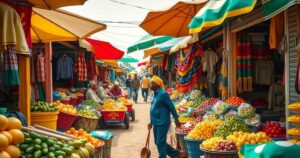Goma’s Unsettled Peace: The Lingering Impact of Conflict in Eastern DR Congo

Goma, DR Congo faces continued turmoil following the M23 rebel takeover in January. The takeover has disrupted daily life, led to significant humanitarian challenges, and reignited memories of past conflicts. Violence persists in the region, with heavy civilian casualties and rising crime. As diplomatic efforts stall, the scars of war remain painfully evident.
GOMA, DR Congo — Once a vibrant border town, Goma, located under the watchful eye of Mount Nyiragongo, is now shrouded in a disturbing calm. Following the March 23 Movement (M23) rebels seizing control in January, life has been thrown into chaos, with peace remaining a distant dream for the inhabitants of this city of over two million.
The takeover by M23 on January 27 marked a significant escalation in a long-standing conflict that has plagued eastern Congo. Memories of a similar event in 2012 haunt Goma’s residents. Heavy fighting turned the city into a battleground as artillery shelling struck neighborhoods and key infrastructure like the airport and borders. Official figures estimate over 8,500 deaths and approximately 5,600 injuries from the assault, affecting even those in displacement camps who were caught in the crossfire.
Although M23 declared a “humanitarian ceasefire” on February 4, violence spans the North and South Kivu provinces. The group has since captured Bukavu, the capital of South Kivu, establishing an extensive network of frontline positions throughout the area. Some experts have voiced concerns that this cycle of conflict could deepen. Notably, Corneille Nangaa of the Congo River Alliance has pledged to “liberate the entire country,” suggesting ambitions beyond just Goma.
The atmosphere in Goma post-takeover has been notably silent but filled with underlying tension. Commercial hubs that once buzzed with activity are now ghost towns. The banking sector has nearly collapsed, leading to critical cash shortages. Simultaneously, crime rates have surged, particularly at night. In the absence of government authority, M23 has set up checkpoints, levying taxes and tolls on major routes.
The humanitarian situation is dire. The International Organization for Migration reports more than 1.2 million new displacements in the Kivu provinces since January. Many who initially sought refuge in Goma have been forced to flee yet again, often with nowhere safe to go.
In early February, M23 demanded the evacuation of significant displacement camps, giving families mere hours to leave. Those that complied did so with only what they could carry. Unfortunately, many returned to find their homes destroyed, lands scorched, and roads ruined.
Additionally, the town of Sake, situated about 27 kilometers west of Goma, has been engulfed in fierce fighting between M23 and Congolese forces alongside local militias. The area has seen historic conflict but is plagued by the remnants of warfare — unexploded ordnance littering fields, posing constant threats to residents. Local resident Christian Kabuya lamented, “We have found live shells in over ten locations,” recalling tragedies where children fell victim to accidental explosions.
In Goma’s western sector, Ndosho Hospital stands as the only facility still accepting patients wounded in the ongoing conflict. Despite support from the International Committee of the Red Cross (ICRC), the hospital operates under immense pressure. Taoffic Mohamed Toure, a seasoned ICRC representative familiar with conflict zones, characterized the situation in eastern Congo as “uniquely complex,” citing the constant violence and multifaceted actors at play.
As peace negotiations stall and ceasefires struggle to hold, the people of eastern DRC live in persistent uncertainty. The once-quiet glow of Nyiragongo’s lava is overshadowed by the undeniable scars of war, now etched into the very fabric of Goma’s reality.
The situation in Goma, DR Congo, illustrates the deep-seated and ongoing challenges stemming from years of conflict. The M23’s takeover has not only disrupted daily life but has also compounded the humanitarian crisis. With violence persisting, the people of Goma remain trapped in a cycle of fear and uncertainty, struggling to return to a semblance of normalcy while the scars of war continue to linger.
Original Source: english.news.cn








